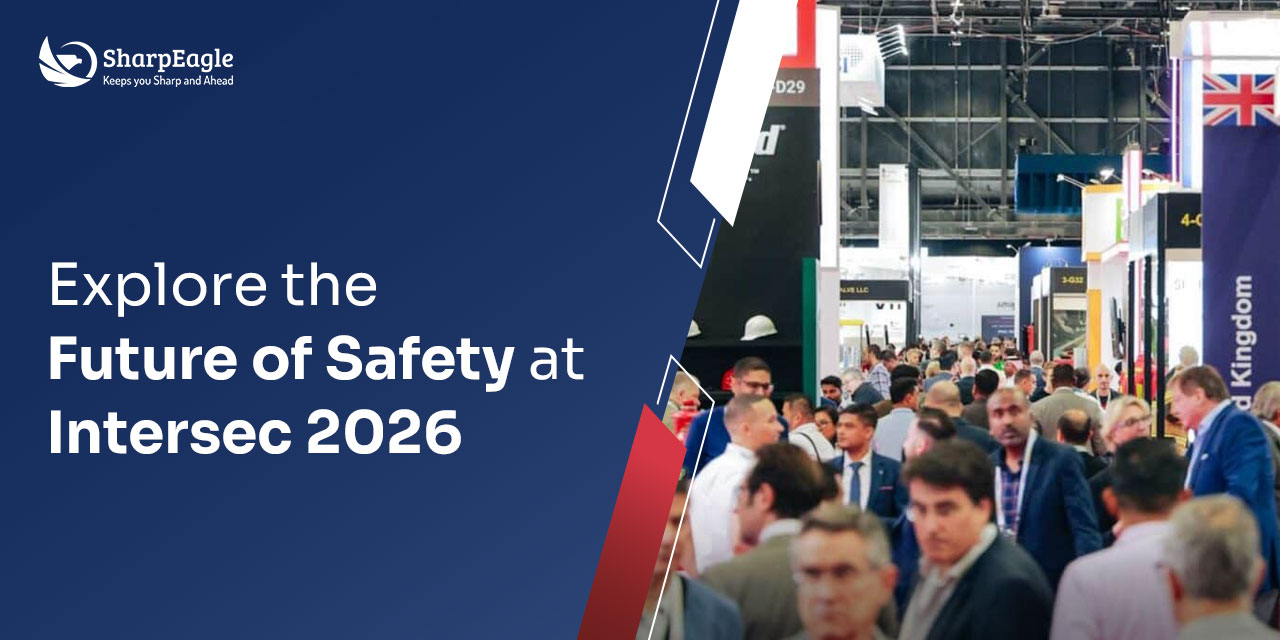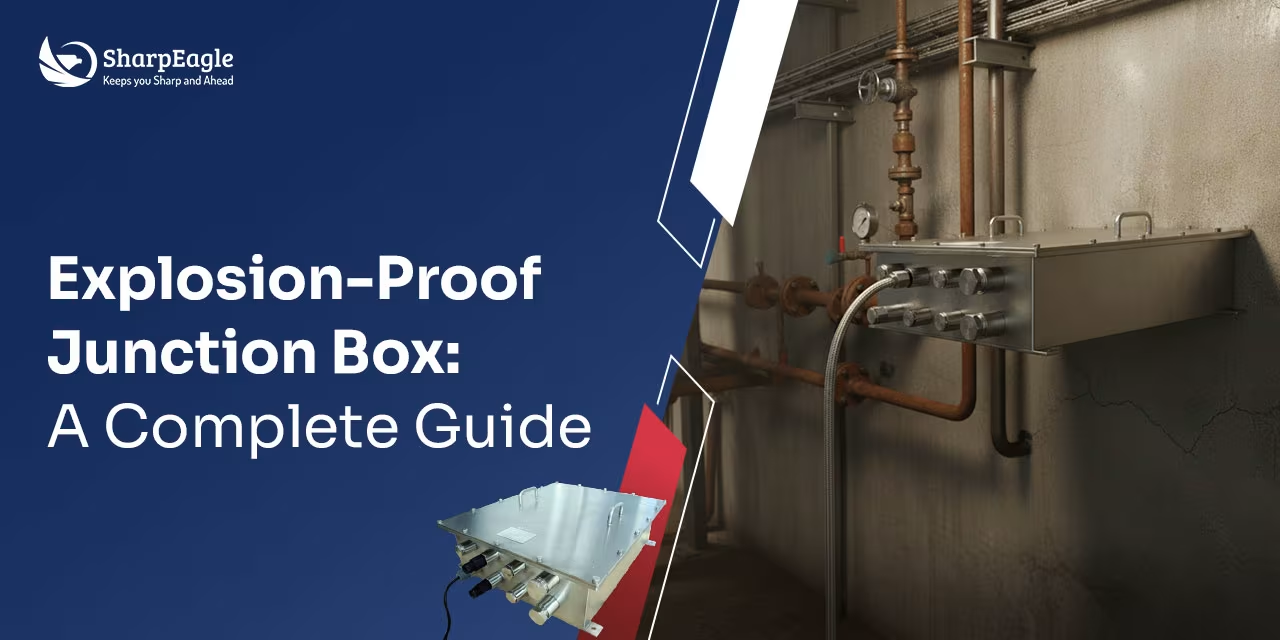

In hazardous industries such as oil, gas, and chemical processing, safety isn't just a priority — it’s a necessity. One critical aspect of safety in these environments is the type of lighting used. But what makes lighting safe for hazardous areas? Are LED lights explosion proof? And, why are they the go-to solution for such high-risk zones?
Lighting plays a crucial role in ensuring a safe working environment, but not all lights are designed to withstand volatile conditions. In this blog, we will explore 7 essential LED lighting facts that highlight why LED explosion proof lights are an indispensable asset in hazardous areas. From their energy efficiency to their certifications, we’ll cover all you need to know about these specialised lights and how they can enhance both safety and efficiency in your operations.
A common misconception surrounding explosion proof lights is the belief that they are indestructible or can survive an external explosion. However, the term “explosion-proof” refers to a light’s ability to prevent any internal sparks from coming in contact with the surrounding atmosphere and causing an explosion.
The LED explosion proof lights are designed to prevent ignition in hazardous areas by containing any sparks or electrical faults within a robust, sealed housing. This is critical in environments where flammable gases, vapours, or dust are present.
The key feature of explosion proof technology is containment. These lights are designed to prevent internal electrical faults from becoming external hazards. Whether you’re working in a petrochemical plant or a grain silo, the need to minimise the risk of ignition is paramount. LED explosion proof lights are not designed to survive an external blast but to prevent one from occurring in the first place.
Not all LED lights are explosion proof. To be safe for use in hazardous locations, lights must meet strict industry standards and obtain specific safety certifications.
Key certifications for explosion proof lights include:
These are considered safety rated lights, meaning they have passed rigorous tests to ensure they can be safely used in environments classified as hazardous, such as Class I Division 1 & 2 or Zones 0, 1, and 2.

By ensuring your lights meet these certification standards, you guarantee that they are suitable for hazardous areas. Certifications are crucial not just as regulatory requirements but as vital indicators of a product's reliability in explosive atmospheres.
Another crucial fact about LED lights is their energy efficiency, which not only saves costs but also enhances safety in hazardous environments. LED explosion proof lights are significantly more energy-efficient than traditional lighting systems like incandescent, fluorescent, or halogen lights. They use up to 80% less energy while delivering the same or even better illumination.
In hazardous areas, where lighting systems may run continuously, energy consumption becomes a serious concern. By opting for LEDs, businesses can significantly reduce their energy bills, especially in industries where large facilities require extensive lighting. Reduced energy consumption also means lower operating temperatures, which is an important safety factor in areas where excessive heat could ignite volatile gases or dust particles.
LEDs are safer than most traditional lighting options due to their energy efficiency and reduced heat output. The lower heat emission of LED explosion proof lights makes them inherently safer in environments where flammable materials are present.
For more insights on safety and performance benefits, explore our blog 4 Reasons for Using Explosion Proof Lights in Hazardous Areas.

One of the most beneficial LED light facts for hazardous environments is their durability and long lifespan. Explosion proof LED lights are built to last. Traditional lighting systems like halogen or fluorescent lights have shorter lifespans, often ranging from 1,000 to 10,000 hours, requiring frequent replacements, especially in harsh conditions.
In contrast, LED explosion proof lights can last up to 50,000 to 100,000 hours, depending on the application and environmental factors. This impressive lifespan minimises the need for replacements, reducing maintenance costs and minimising downtime in operations.
Hazardous locations benefit greatly from LED lights safety, as fewer maintenance interventions are required, lowering the risks associated with frequent repairs or replacements in dangerous zones. Reduced maintenance means fewer opportunities for accidents and less exposure to hazardous conditions for workers.
In today’s industrial landscape, sustainability and eco-friendly solutions are becoming increasingly important. Explosion proof lighting are not only safe for hazardous environments but also environmentally friendly.
Compared to traditional lighting systems, LEDs use less energy, which reduces carbon emissions and lowers the overall energy consumption of your facility. Additionally, LED lights do not contain harmful materials like mercury, which is commonly found in fluorescent lights. This makes them safer for the environment and simplifies the disposal process, as there are fewer hazardous materials to manage.
For businesses focused on reducing their environmental footprint, the switch to LED explosion proof lights aligns with sustainability goals. They offer an eco-friendly alternative that cuts energy costs, minimises harmful emissions, and supports more responsible waste management.
One of the most significant LED lighting facts is the integration of advanced control systems in modern explosion proof LED lights. These control systems allow for remote monitoring, real-time adjustments, and automated operations, all of which enhance safety and efficiency.
In hazardous environments, lighting systems can now be equipped with sensors that monitor environmental conditions and adjust lighting levels accordingly. Facility managers can remotely control the lights, turning them on or off, dimming them, or altering their colour temperature to suit specific tasks — all from a safe distance.
These advanced control systems are particularly beneficial in industries like offshore drilling or chemical manufacturing, where immediate responses to changing conditions can be lifesaving. By enabling remote monitoring and control, companies can ensure that their lighting systems are always optimised for both efficiency and safety, reducing the need for manual interventions in hazardous zones.
To better understand the selection criteria and application needs, read our detailed guide on How Oil And Gas Industry Should Choose LED Explosion-proof Light.
One of the most critical facts about LED lights used in hazardous areas is their durability. Explosion proof LED lights are engineered to withstand extreme conditions, including high temperatures, corrosive environments, and mechanical impacts.
Industries such as offshore oil drilling, chemical processing, and mining often operate in environments where standard lights would fail. LED explosion proof lights are built using rugged materials like stainless steel or aluminium, which are resistant to corrosion and wear. Their lenses are made from shatterproof glass or durable polycarbonate, ensuring that they can withstand physical shocks and extreme weather conditions.
Additionally, LED lights are intrinsically safe. While the term “intrinsically safe” generally refers to equipment that cannot produce heat or sparks capable of igniting a hazardous atmosphere, LED explosion proof lights are designed with features that make them safe to use in such environments. By containing any potential spark within their housing, they effectively function in the same manner as intrinsically safe equipment.
This durability not only enhances safety but also ensures that the lights will continue to function in the most demanding environments, reducing the risk of lighting failure and the subsequent hazards that could arise.
When it comes to hazardous environments, LED explosion proof lights offer a blend of safety, efficiency, and durability that makes them ideal for industries such as oil and gas, chemical processing, and mining.
By understanding these LED lighting facts, including their certifications, energy efficiency, durability, and advanced control systems, you can make an informed choice that enhances both safety and operational efficiency in your facility.
Optimise your lighting system with our extensive range of certified explosion proof lights, expertly designed for hazardous areas. Our solutions are not only certified to enhance safety but also to improve efficiency and reduce energy costs. Explore the SharpEagle website or book a free consultation call with our experts to find the perfect lighting solution tailored to your specific industry needs.



